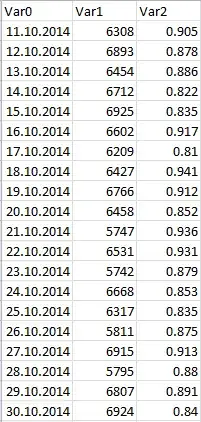Dimension Reduction?
What do these 25 yi represent? What is their real-world representation? Soil quality? Happiness? Return on investment? Are they all measures of completely different things? If so, then you could treat them all as different dependent variables. If they are related, you should try to do some type of dimension reduction. Depending on what the real-world content of your dependent variables yi are, you could try a principal components analysis or exploratory factor analysis to see if you could reduce your 25 items to a smaller number.
For example, consider the Symbolic Racism 2000 scale. It is 8 items, so in my dataset I have y1, y2, ..., y8. However, each of these items taps into the same theoretical construct: prejudice. The original authors of the scale show that all of those items load on one single factor in both exploratory and confirmatory factor analyses. So what do I do? I just get the mean of the 8 items and use that one variable as my dependent variable. I would be very, very surprised if the 25 items you have do not reduce to some more parsimonious structure than just 25 completely different things that you have measured.
Univariate Analysis on Reduced Data
Let's say you run an EFA or PCA and see that the 25 items are really all measuring one concept. What most people do is simply average across all 25 items (reverse-scoring when necessary) and run a univariate analysis on that. So:
$\overline{y} = (y_1 + y_2 + ... + y_{25})/25$
Then you would specify the linear regression equation:
$\overline{y} = \beta_0 + \beta_1Country + \beta_2Sex + \beta_3Grade + \epsilon_i$
Except that Country would have a number of dummy-coded variables since it is categorical with more than two levels.
Your question about Sex is confusing. If you are interested in the effect of Sex, then you must keep them in the same analysis. The coefficient for Sex will tell you if there is an influence of Sex on the outcome. Are you thinking that the relationship between some of the other variables and yi will be different depending on Sex? If so, then you can specify and interaction between Sex and the other variables of interest.
Structural Equation Modeling
Let's say that, after doing dimension reduction, you find that you can reduce all the yi to 3 factors. I would then suggest doing a structural equation model. With these models, you can specify various dependent variables at once. It also let's you specify the influence of each of the other predictors (e.g., Sex, Country, Grade on each of the three factors that are made up of different yi simultaneously). This is an example of what one of these models looks like:

You can see from this that there is one IV and three DVs. Each of these three DVs is made up of 3 measured items each. In theory, you could just specify all 25 variables as their own DV predicted from each of the other three IVs.
The problem with this is the model becomes so large and unwieldy. I would be shocked if you aren't able to reduce your data down to a couple constituent factors or componenets.
Separate Analyses
Let's say that you really do have 25 completely different dependent variables you wish to analyze (a lot of the decisions will depend on the content of the measures). First, I would ask: Why did you choose to investigate 25 totally different things in the same study? If these dependent variables are different enough to not be considered to load on some smaller number of factors (i.e., y1 is test anxiety, y2 is political conservatism, y3 is neuroticism, etc.), then you could run a bunch of different models separately—I think that is fine, given that the dependent variables aren't related to one another at all.
